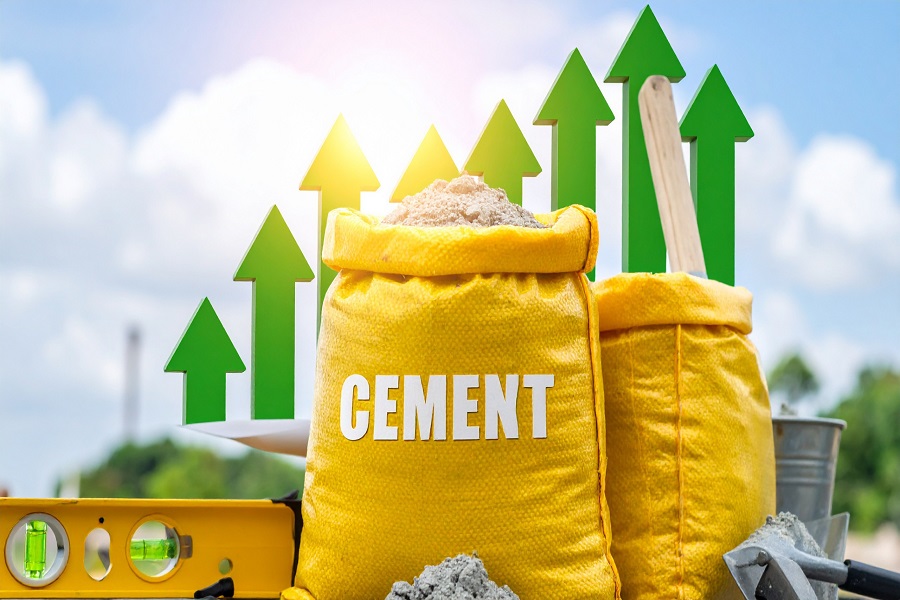India’s growing economy has consistently relied on infrastructure development as one of its main engines for progress. Among the key contributors to infrastructure projects are cement stocks in India — companies engaged in manufacturing, distributing, and selling cement, which serves as the foundation of construction activities. These stocks are a crucial component of India’s infrastructural ecosystem and often act as barometers for economic growth. A detailed analysis reveals that cement stocks are closely tied to infrastructure initiatives, making them attractive investment opportunities.
The Strategic Importance of Cement Stocks in India
The cement stocks in India are essential because of their integral role in both basic infrastructure like housing and large-scale developments such as highways, airports, and metro networks. Cement is a vital raw material for construction projects, meaning that its demand rises in line with infrastructure growth.
As the Indian government focuses on developing roads, bridges, smart cities, and industrial corridors, the consumption of cement increases significantly. Leading companies such as Ultratech Cement, Shree Cement, Ambuja Cement, and ACC dominate the Indian cement industry. Their market performance often mirrors the nation’s infrastructure expansion rate. These firms have grown steadily as the government invests heavily in initiatives like the Pradhan Mantri Awas Yojana, Bharatmala Pariyojana, and Smart City Mission.
India is the second-largest producer of cement globally, with an annual production of over 300 million metric tons. This figure is expected to rise as new plants are commissioned and existing facilities expand. Given India’s rapid urbanisation and infrastructure pipeline, cement stocks are positioned for sustained long-term growth.
Infrastructure Growth as a Driver for Cement Demand
The infrastructure sector in India is experiencing significant expansion, driven by robust policies and government funding. Programmes such as the PM Gati Shakti Master Plan, which aims to create multi-modal connectivity, have built a strong foundation for increased cement consumption. Highway construction, affordable housing, and large-scale energy projects continue to fuel demand for cement.
Private sector participation also adds momentum. Rapid urbanisation in tier-2 and tier-3 cities has spurred residential and commercial construction. Additionally, the manufacturing sector’s growth has led to higher demand for warehouses and industrial zones, further boosting cement usage.
From an investment perspective, cement stocks typically perform well during infrastructure booms. Increased construction activity drives sales and revenue growth for cement manufacturers. This strong correlation highlights why investors should closely track infrastructure policies and construction trends as indicators of cement stock performance.
How PCR Ratio Reflects Market Sentiment for Cement Stocks in India
A crucial aspect of analysing cement stocks is understanding how market sentiment influences their price behaviour. The PCR ratio, or Put-Call Ratio, serves as a key indicator of market sentiment. The PCR ratio is calculated by dividing the total number of put options by the total number of call options:
PCR Ratio = Total Put Options / Total Call Options
When the PCR ratio for cement companies deviates from the standard 1.0 benchmark, it reflects either bullish or bearish sentiment. A higher PCR ratio suggests pessimism (more puts than calls), while a lower PCR ratio indicates optimism (more calls than puts). Analysts use this data to interpret expectations related to infrastructure spending and policy changes.
For example, a low PCR ratio could signal growing optimism in anticipation of increased government investment in infrastructure, which would benefit cement stocks in India. Therefore, tracking the PCR ratio helps investors predict potential trends in the cement sector and make informed decisions.
Challenges Faced by Cement Stocks Despite Infrastructure Growth
While the outlook for cement stocks in India remains strong, there are several challenges that investors should consider:
- Raw Material Costs: Cement production depends on inputs like limestone, coal, and gypsum. Volatile raw material prices can affect profit margins.
- Energy Consumption: Cement manufacturing is energy-intensive, and rising energy tariffs directly increase production costs.
- Environmental Regulations: With the government tightening emission norms, cement firms must invest in cleaner technologies, which may raise short-term costs despite long-term sustainability benefits.
- Competition: The presence of unorganised players in local markets can lead to price competition, impacting the profitability of large cement companies.
Despite these challenges, leading cement producers continue to innovate, adopt green technologies, and expand capacity to maintain long-term competitiveness.
Investment Outlook for Cement Stocks in India
The future of cement stocks in India appears bright, backed by strong economic fundamentals and continuous government focus on infrastructure expansion. The industry has diversified its product offerings to include high-performance and sustainable cement types suited for various applications.
Moreover, projects targeting rural housing and urban renewal ensure consistent demand. Investors seeking steady growth should evaluate cement stocks based on historical performance during infrastructure upcycles. Monitoring the PCR ratio of leading cement companies can also offer insights into investor sentiment and price direction.
Conclusion
Cement stocks in India remain deeply connected to the country’s infrastructure development journey. As government-backed projects and private real estate initiatives expand, cement demand is expected to grow steadily. Although challenges such as input cost volatility and environmental regulations persist, the sector’s long-term outlook remains positive.
Investors focusing on infrastructure-led growth should consider cement stocks as an essential part of their portfolio. By leveraging tools like PCR analysis and staying informed about policy updates, investors can identify profitable opportunities. As India moves forward with its ambitious infrastructure agenda, cement stocks in India are poised to play a pivotal role in shaping the nation’s economic future.

